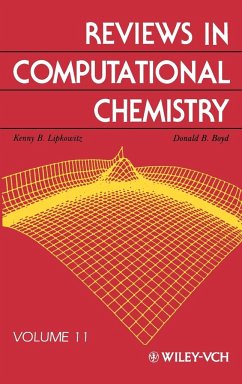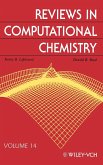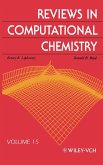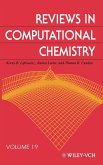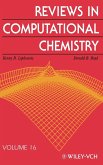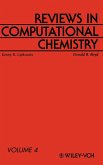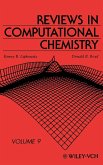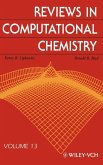Computational methods are increasingly used in conjunction with organic, inorganic, medicinal, biological, physical, and analytical chemistry and research as well as in biotechnology, materials science, and physics. Individuals in these fields must understand and stay current with recent developments in the field. This series brings together leading authorities in the field of computer-aided molecular research. Volume 11 explores computer-aided ligand design and modeling of biomolecules.
Volume 11 Reviews in Computational Chemistry Kenny B. Lipkowitz and Donald B. Boyd
The Theme of this Eleventh Volume is Computer-Aided Ligand Design and Modeling of Biomolecules. A Stellar Group of Scientists from Around the World Join in this Volume to Provide Tutorials for Beginners and Experts. Chapters 1 and 2 Take A Detailed Look at De Novo Design Methodologies for Discovering New Ligands which May Become Pharmaceuticals. Chapters 3 and 4 Cover the Methods and Applications of Three-Dimensional Quantitative Structure-Activity Relationships (3D-QSAR) Currently Used in Drug Discovery. Ways to Compute the Correct Lipophilic/Hydrophilic Behavior of Molecules are Taught in Chapter 5. Chapter 6 is an Exposition of Realistically Simulating DNA in the Complex Milieu of Ions that Surround it. An Appendix to this Volume Gives A Compendium of Software and Internet Tools for Computational Chemistry. -From Reviews of the Series . This Well-Respected Series Continues the Fine Selection of Topics and Presentation Qualities Set Forth by the Previous Members. For Example, Each Chapter Contains Thorough Treatment of the Theory Behind the Topic Being Covered. Moreover, the Background Material is Followed by Ample Timely Examples Culled From Recent Literature. Journal of Medicinal Chemistry
Hinweis: Dieser Artikel kann nur an eine deutsche Lieferadresse ausgeliefert werden.
Volume 11 Reviews in Computational Chemistry Kenny B. Lipkowitz and Donald B. Boyd
The Theme of this Eleventh Volume is Computer-Aided Ligand Design and Modeling of Biomolecules. A Stellar Group of Scientists from Around the World Join in this Volume to Provide Tutorials for Beginners and Experts. Chapters 1 and 2 Take A Detailed Look at De Novo Design Methodologies for Discovering New Ligands which May Become Pharmaceuticals. Chapters 3 and 4 Cover the Methods and Applications of Three-Dimensional Quantitative Structure-Activity Relationships (3D-QSAR) Currently Used in Drug Discovery. Ways to Compute the Correct Lipophilic/Hydrophilic Behavior of Molecules are Taught in Chapter 5. Chapter 6 is an Exposition of Realistically Simulating DNA in the Complex Milieu of Ions that Surround it. An Appendix to this Volume Gives A Compendium of Software and Internet Tools for Computational Chemistry. -From Reviews of the Series . This Well-Respected Series Continues the Fine Selection of Topics and Presentation Qualities Set Forth by the Previous Members. For Example, Each Chapter Contains Thorough Treatment of the Theory Behind the Topic Being Covered. Moreover, the Background Material is Followed by Ample Timely Examples Culled From Recent Literature. Journal of Medicinal Chemistry
Hinweis: Dieser Artikel kann nur an eine deutsche Lieferadresse ausgeliefert werden.

